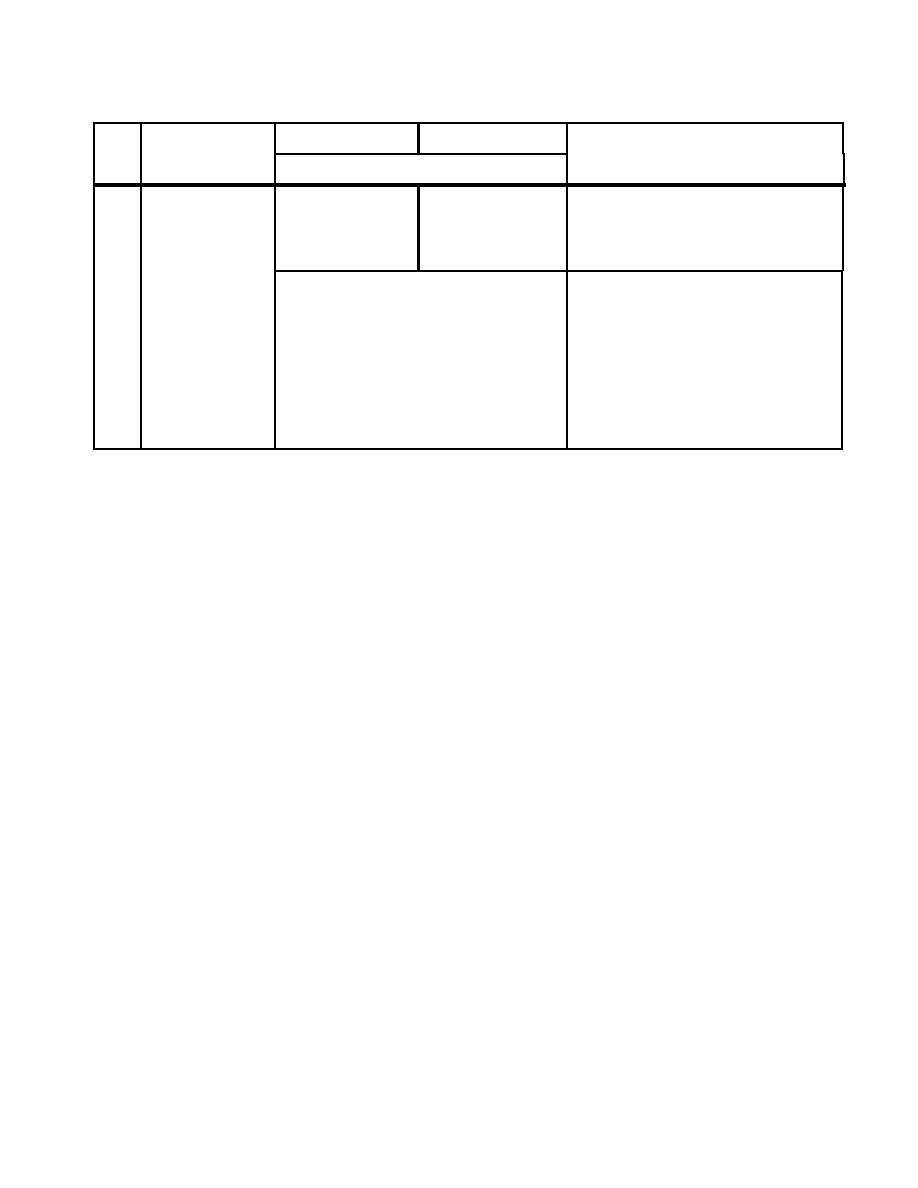
Chapter 5
Table 5.1. Fixed-Wing Taxiways.
Class A Runway
Class B Runway
Item
Item
No.
Description
Requirement
Remarks
For additional information, see
Figure 3.1.
Slope from shoulder pavement.
Class A airfields and Air Force
(a) 40 mm [1"] drop off at edge of
taxiways designed for B-52 aircraft.
paved shoulder
(b) 5% slope first 3 m [10 ft] from
paved shoulder
For additional information, see
(c) Beyond 3 m [10 ft] from paved
Figure 3.1.
shoulder, 2.0% min, prior to
channelization, 10.0% max (See
Slope away from shoulder pavement.
note 2.)
NOTES:
1. NA = Not Applicable
2. Bed of channel may be flat.
3. A 15 m (50 ft) paved shoulder is allowed for C-5, E-4, and 747 aircraft where vegetation cannot be established.
Transverse grade of paved shoulder is 2% minimum to 4% maximum.
4. Metric units apply to new airfield construction and where practical modification to existing airfields and heliports,
as discussed in paragraph 1.4.4.
5. The criteria in this manual are based on aircraft specific requirements and are not direct conversions from inch-
pound (English) dimensions. Inch-pound units are included only as a reference to the previous standard.
6. Airfield and heliport imaginary surfaces and safe wingtip clearance dimensions are shown as a direct conversion
from inch-pound to SI units.
5.6. Rotary-Wing Taxiway Dimensions. Rotary-wing taxiways are either paved or unpaved. Wheel-
gear configured rotary wing aircraft require a paved surface on which to taxi. Skid-gear configured rotary-
wing aircraft taxi by hovering along a paved or unpaved taxiway. Table 5.2 presents the criteria for rotary-
wing taxiway design, including taxiway widths, clearances, slopes and grading dimensions.
5.7. Taxiways at Dual Use (Fixed- and Rotary-Wing) Airfields:
5.7.1. Criteria. For taxiways at airfields supporting both fixed- and rotary-wing aircraft operations, the
appropriate fixed-wing criteria will be applied, except as noted for shoulders.
5.7.2. Taxiway Shoulders. A paved shoulder will be provided at dual use airfields. Shoulder widths
may be increased beyond the requirement presented in Table 5.3, when necessary, to accommodate
dual operations with fixed-wing aircraft.
5.8. Taxiway Intersection Criteria. To prevent the main gear of an aircraft from becoming dangerously
close to the outside edge of the taxiway during a turn, fillets and lead-in to fillets are provided at taxiway
intersections. When an aircraft turns at an intersection, the nose gear of the aircraft usually follows the
painted centerline marking. The main gears, located to the rear of the nose gear, do not remain a constant
distance from the centerline stripe during the turn due to the physical design of the aircraft. The main gears
pivot on a shorter radius than the nose gear during a turn.
5-7


 Previous Page
Previous Page
